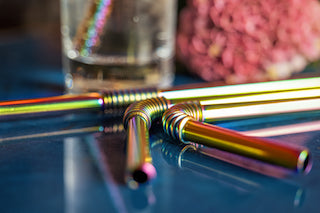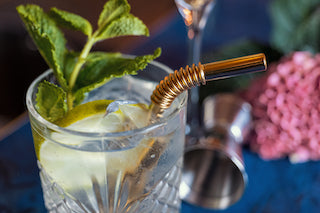
Plastic straws, coffee to-go cups, Styrofoam packaging, etc. – single-use plastic has become an integral part of everyday gastronomy life. And that is understandable at first. Because it is not only a practical helper that can also be used to sell food and drinks outside the home. Plastic packaging is also almost indispensable in the catering industry for hygiene reasons, as it protects food, ensures food safety and extends its shelf life. However, their use also produces huge amounts of plastic waste. Disposable straws are already polluting the world's oceans. Carelessly disposed of food packaging and CoffeeToGo cups cause irreparable everyday life in the gatsronomy can be made plastic-free with just a few optimizations. We have put together 5 great tips and tricks for you that will help you optimize your catering industry step by step to make it plastic-free.
Tip 1: Use sustainable alternatives in the kitchen
Wooden spoons, kitchen rolls, freezer bags – there is usually a lot of plastic in the kitchen that sooner or later ends up in the trash. But here too, you can easily save plastic, for example by replacing broken kitchen utensils with sustainable alternatives made of wood, bamboo or stainless steel. Replacing dishwashing brushes, cutting boards and kitchen rolls with sustainable and long-lasting alternatives is particularly worthwhile in many ways. This not only reduces general waste in the kitchen in the long term, but also significantly reduces running costs. In addition, using cutting boards made of wood or cork also has the advantage that, in contrast to the plastic version, they have an antibacterial effect and are gentle on knives and wrists.
Tip 2: Avoid plastic waste when shopping
Admittedly, it is difficult to do without plastic in the catering industry, especially when shopping. Because no restaurateur will go to the nearest supermarket armed with a jute bag and wholesalers usually deliver their goods wrapped in plastic. Nevertheless, it is still possible to save plastic when shopping, for example by working with retailers who completely avoid plastic packaging for their products. Buying from regional producers also significantly reduces plastic waste. Because of the short delivery routes, the shelf life of the goods does not have to be extended with plastic packaging - this makes plastic unnecessary.
Tip 3: Use reusable alternatives for out-of-home sales
Styrofoam food packaging and CoffeToGo cups – Everything that is sold outside the home usually ends up in disposable plastic packaging. It's cheap, quick and gives the customer a certain feeling that the products are hygienically safe. But here too, there are now environmentally friendly alternatives made from bamboo, wood, sugar cane or corn starch, which are in no way inferior to the original and can sometimes simply be disposed of with organic waste. Using reusable tableware is also a good way to reduce plastic waste in out-of-home businesses. Equipped with a deposit system, they can be reused for a long time and can easily be returned by the customer with the next order. And by switching to reusable CoffeeToGo cups, you can not only save a lot of plastic waste. Printed with your own logo, they are also a great advertising medium and an environmentally friendly alternative to coated paper cups.
Tip 4: Reusable drinking straw instead of disposable straw
Whether for fruity cocktails or hot latte macchiato – plastic straws are almost indispensable in the catering industry. And a real environmental problem. Around 40 million plastic straws are used in Germany every year, making up a significant proportion of the plastic waste that washes up on beaches. And who doesn't remember the video of the turtle having a plastic straw removed from its nose? But here, too, there are numerous alternatives for the catering industry, the use of which also saves money in the long term. With the Turtleneck ® Straw, for example, we have developed an alternative to plastic straws that are in no way inferior to the original in terms of flexibility and feel and which not only saves around 10,000 disposable straws per year, but also saves money in the long term. And with its elegant, customizable design, it looks good too!
Tip 5: Avoid pre-portioned foods at the table
There is no question that pre-portioned food is incredibly practical in the catering sector and gives guests the feeling that they are eating hygienically safe food. Honey, Nutella and jam in particular often end up in small packages on the buffet or in the breakfast basket. However, they are also a real environmental problem and produce huge amounts of avoidable plastic waste, which can cost a lot of money to dispose of. It is therefore better to serve spreads from large glasses in glass bowls or edible bowls or to make them available to the customer at the buffet. This means the guest can take as much as they want and, in addition to plastic waste, you can easily avoid unnecessary food waste - and costs. Because larger packaging is usually cheaper than expensive portion packaging and you can also portion it yourself as needed. Milk, honey and juice can also be filled into a practical and hygienic dispenser at the buffet or served in stylish jugs at the table.
Additional content can be found in the article: https://www.mcmakler.de/magazin/plastik-vermeiden-tipps-tricks-fuer-den-alltag


